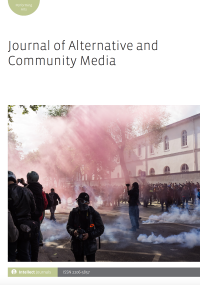
Full text loading...
 , Eric Kwame Adae2
, Eric Kwame Adae2
Climate crisis, fuelled by dominant social, political and economic structures, causes a rift in the Earth’s metabolism. In the built environment, where people live and work, social-ecological communities, such as ecovillages and cohousing, model and pursue alternative, interconnected relations with nature. This study examines five social-ecological communities in the Pacific Northwest of the United States and their use of strategic communication to pursue structural change. Long interviews identified three themes and eight sub-themes through which community members influence the mainstream that surrounds them and enrich their own membership and infrastructure. This study demonstrates that postmodern approaches to strategic communication active on the local level, while in tension with modernist approaches, provide an effective means to respond to climate crisis in the built environment.

Article metrics loading...

Full text loading...
References


Publication Date:
https://doi.org/10.1386/joacm_00089_1 Published content will be available immediately after check-out or when it is released in case of a pre-order. Please make sure to be logged in to see all available purchase options.